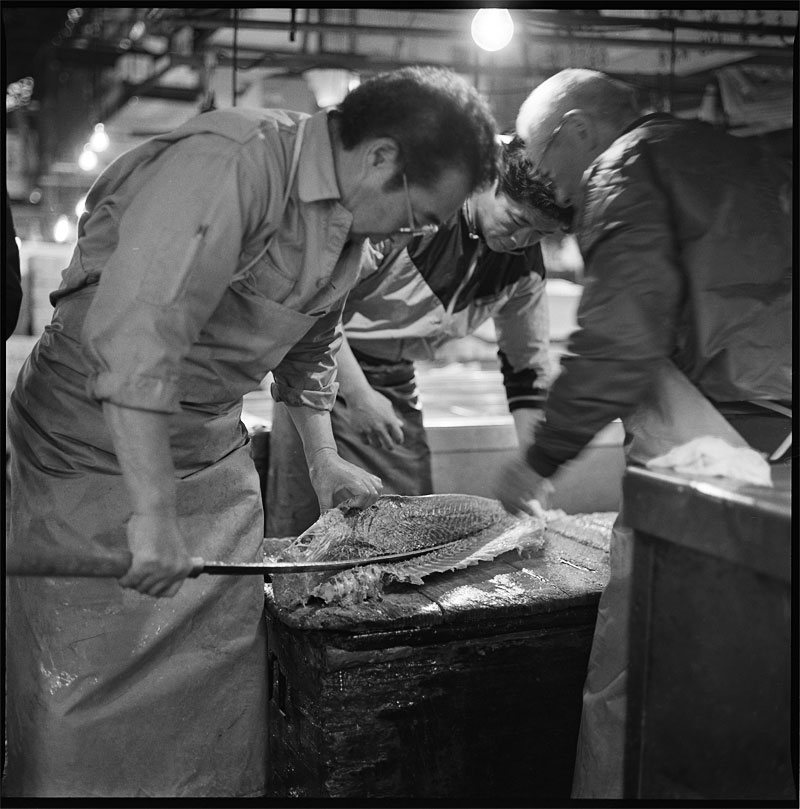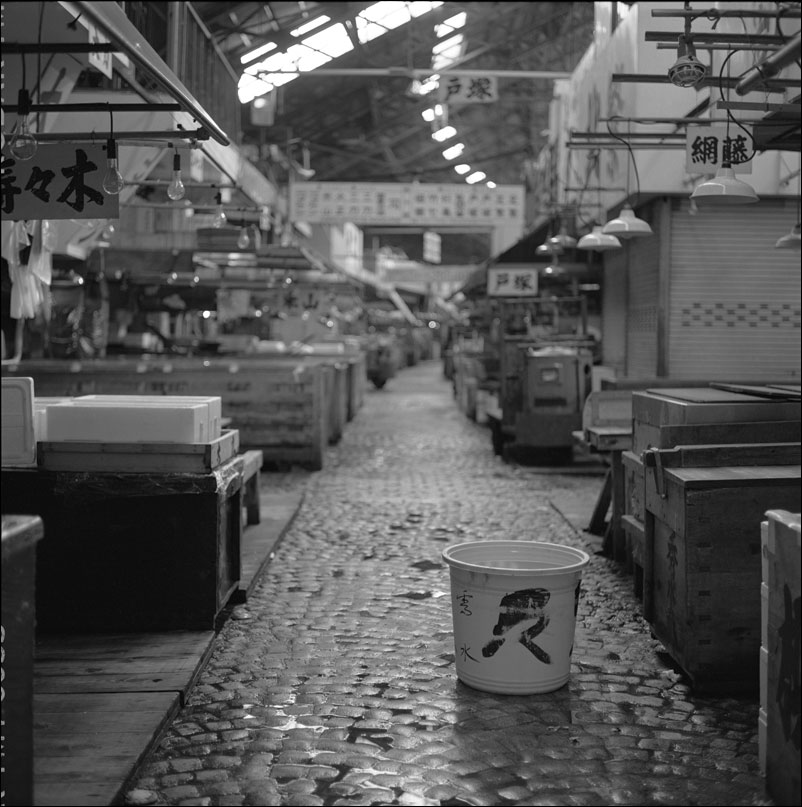 This is the last day of operation for the Tsukiji Fish Market. This image is from the early afternoon when the inner market was closed. The market had been in business in this location since 1935. The images on our site are from the early 1990s when access to the inner market was less restrictive. The increasing influx of tourists required the market to limit access. The restaurant in the outer market will remain in this location. This is from Tsukiji: Tokyo Fish Market Suite. Click on the image for a larger view.
This is the last day of operation for the Tsukiji Fish Market. This image is from the early afternoon when the inner market was closed. The market had been in business in this location since 1935. The images on our site are from the early 1990s when access to the inner market was less restrictive. The increasing influx of tourists required the market to limit access. The restaurant in the outer market will remain in this location. This is from Tsukiji: Tokyo Fish Market Suite. Click on the image for a larger view.
Tag Archives: Mamiya C220
The End of an Era, Part 3
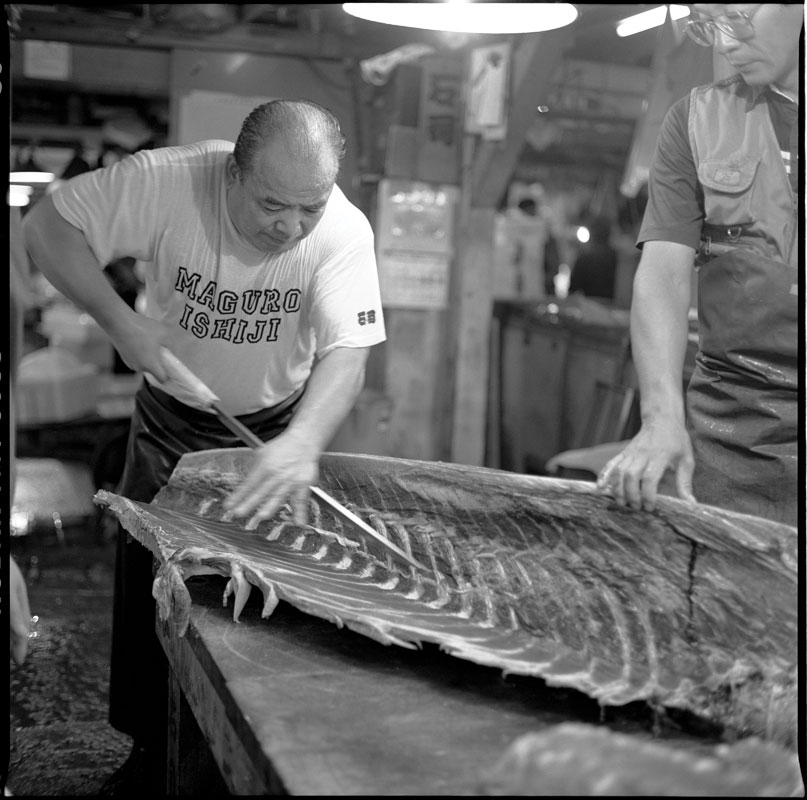 Wholesaler preparing a tuna from the auction with a knife especially designed for the fish. Maguro is the Japanese for tuna. This is the last week of operation for the fish market at the Tsukiji location. The image is from Tsukiji: Tokyo Fish Market Suite. Click on the image for a large view.
Wholesaler preparing a tuna from the auction with a knife especially designed for the fish. Maguro is the Japanese for tuna. This is the last week of operation for the fish market at the Tsukiji location. The image is from Tsukiji: Tokyo Fish Market Suite. Click on the image for a large view.
Tsukiji Fish Market—Part 5
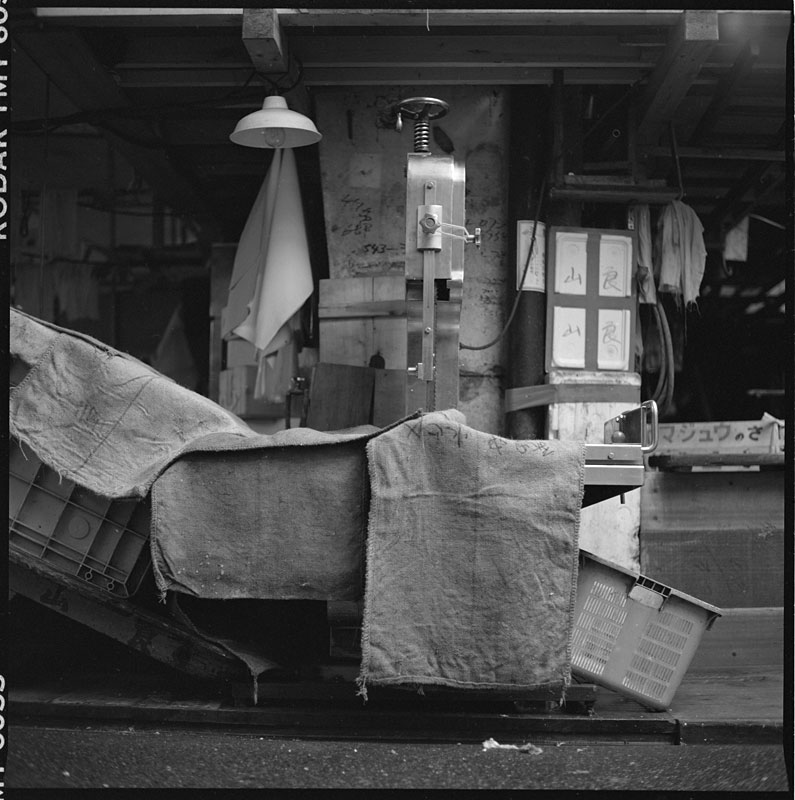 By nine o’clock in the morning, the market is deserted. Everything has been washed down and left to dry. The only sign of life is an occasional cat scavenging for food. With the surrounding city coming to life with the business of the day, Tsukiji resembles an abandoned factory rather than a vibrant fish market. Click on the image for a larger view.
By nine o’clock in the morning, the market is deserted. Everything has been washed down and left to dry. The only sign of life is an occasional cat scavenging for food. With the surrounding city coming to life with the business of the day, Tsukiji resembles an abandoned factory rather than a vibrant fish market. Click on the image for a larger view.
Tsukiji Fish Market—Part 4
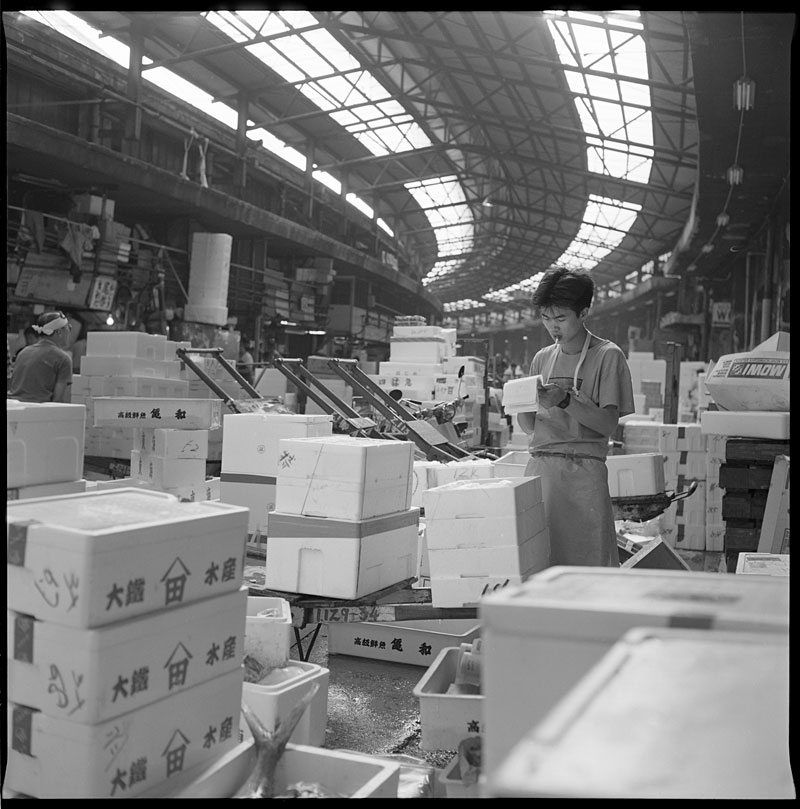 Tsukiji wholesale market, which trades in seafood and produce, covers about 22.5 hectares/56 acres with the fish market taking up the majority of the area. Built on reclaimed land in Tokyo Bay, much of the architecture dates back to its opening in 1935. The large, curved structure, which typifies the market, houses the intermediate seafood wholesalers. The auction areas are just outside that on the waterfront. Ongoing renovations have made the buildings a warren of passages and alcoves. Click on the image for a larger view.
Tsukiji wholesale market, which trades in seafood and produce, covers about 22.5 hectares/56 acres with the fish market taking up the majority of the area. Built on reclaimed land in Tokyo Bay, much of the architecture dates back to its opening in 1935. The large, curved structure, which typifies the market, houses the intermediate seafood wholesalers. The auction areas are just outside that on the waterfront. Ongoing renovations have made the buildings a warren of passages and alcoves. Click on the image for a larger view.
Tsukiji Fish Market—Part 2
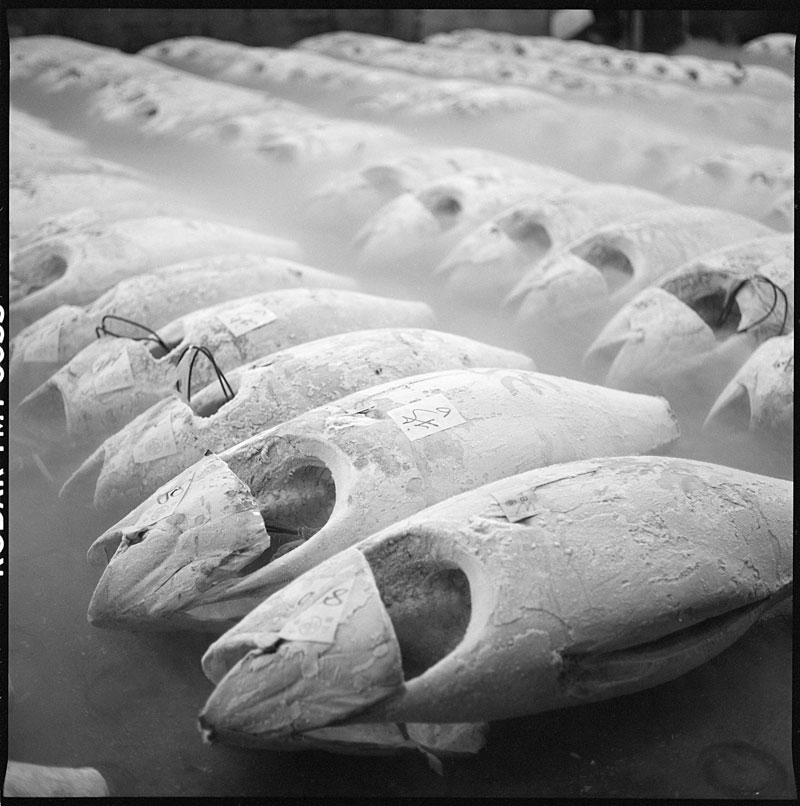 Just after midnight, trucks with frozen tuna roll into Tsukiji Fish Market. They are there for the early morning auctions. When the workers open the back doors of a truck, they pull the fish out onto a large tire on the floor to break its fall. The tuna is then dragged over the concrete like a huge ice cube and placed in orderly rows.
Just after midnight, trucks with frozen tuna roll into Tsukiji Fish Market. They are there for the early morning auctions. When the workers open the back doors of a truck, they pull the fish out onto a large tire on the floor to break its fall. The tuna is then dragged over the concrete like a huge ice cube and placed in orderly rows.
One night, I was standing on the wharf between a tuna truck and the water. The men unloaded some fish. They swung the doors shut. The truck slowly rolled forward as if it is was leaving. It stopped. Suddenly, the truck roared into reverse and shot backwards. The driver hit the brakes and the load of frozen fish in the back of the trailer hurtled toward the closed doors, hitting them like repeating cannon fire. The men swung the doors open and continued unloading the cargo. Although, when it happen, I was not thinking about what they were doing. I was wondering which was the better choice, getting run over by a fish truck or jumping into Tokyo Bay. Click on the image for a larger view.

